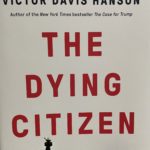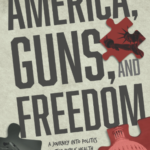Academics Pick Worst Presidents
But not on purpose.
The people who claim the greatest fealty to the first amendment are more than likely to vote for U. S. presidents who do not have a very high regard for the entire Constitution. “Woodrow Wilson is usually counted among America’s greatest presidents, but he should be regarded as one of America’s worst,” historian Steven F. Hayward avers in The Politically Incorrect Guide to The Presidents, published by Regnery Publishing. “Wilson’s conventional reputation chiefly reflects the ‘opportunity’ for ‘greatness’ afforded to presidents who happen to preside in times of large events (especially wars), and the prevailing bias of historians who prefer presidents of ‘vision’ who expand the size of the presidency and the scope of government.”
“In the absence of World War I, Wilson would likely be remembered as a domestic reformer who brought us the federal income tax and the direct election of senators through the Sixteenth and Seventeenth Amendments (though both constitutional amendments had been proposed before Wilson took office), the Federal Reserve Bank, and the ill-conceived Federal Trade Commission—hardly a legacy many Americans admire.” As well, Wilson introduced extensive censorship during World War I.
“The constitutionality of presidential acts is often controversial,” Hayward writes in his book. “But students and citizens will learn little about key constitutional moments in presidential history from most of the leading textbooks, let alone from the news media.”
“Amazingly, you can read through a pile of college textbooks and historical surveys of the presidency without encountering a single mention of the president’s relationship to the Constitution or of how a president’s arguments and actions changed the way our Constitution is understood and operates.” Hayward sought to address this imbalance by grading our chief executives exclusively on their often uneasy relationship to the Constitution. “I’m not sure if I’d call it ‘Hayward’s razor,’” the author joked in a presentation on the book at the Heritage Foundation.
Consequently, he gives academic favorites such as Wilson and FDR “Fs” while giving Harding and Coolidge superlatives. “Most treatments of the presidency treat it like another CEO position, albeit with the U. S. as the corporation,” Hayward said at Heritage on February 13, 2012. This partly happens because of a “value-free approach to social science,” Hayward averred.
Conversely, those presidents most admired by social scientists tend to emphasize, “Leadership with a capital l—taking Americans places they didn’t even know they wanted to go,” Hayward observed. In Hayward’s guide to the White House, he also gives us fascinating little tidbits on the presidents. For example, we learn that “Carter is the only president who ever filed a UFO sighting with the U. S. Air Force” and “He also directed the government to consult a psychic to help locate a missing airplane.”
As well, we get Bill Clinton’s rather creepy observation while visiting the museum at the National Geographic Society. “You know, if I were a single man, I might ask that mummy out,” Clinton cracked. “That’s a good-looking mummy.”



